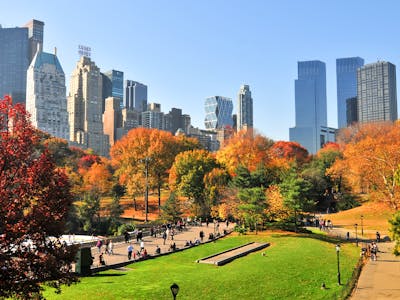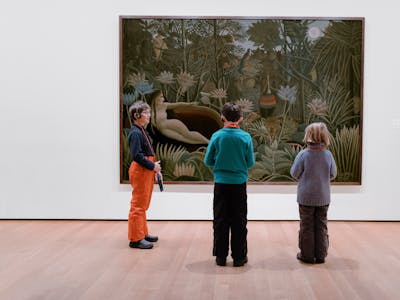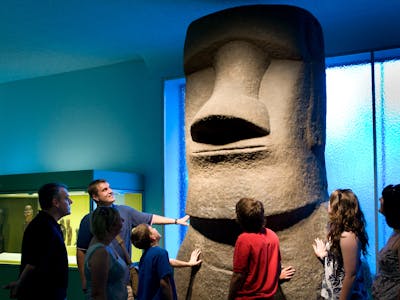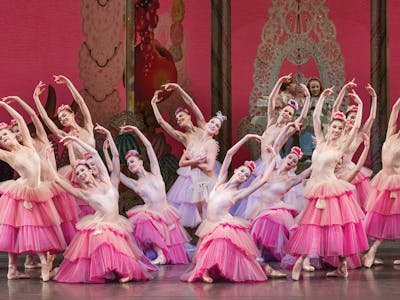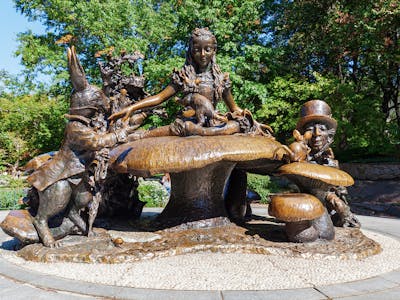The Guggenheim Museum is one of the most renowned and influential museums of modern and contemporary art in the world. Located on Fifth Avenue in New York City, the museum is a study piece of architecture, designed by the legendary Frank Lloyd Wright. The museum’s distinctive spiral shape invites you to interact with its rich and diverse collection, featuring works by Picasso, Kandinsky, Pollock, and many more. Keep reading to explore the museum’s vast collection, learn about its history, and plan your visit.
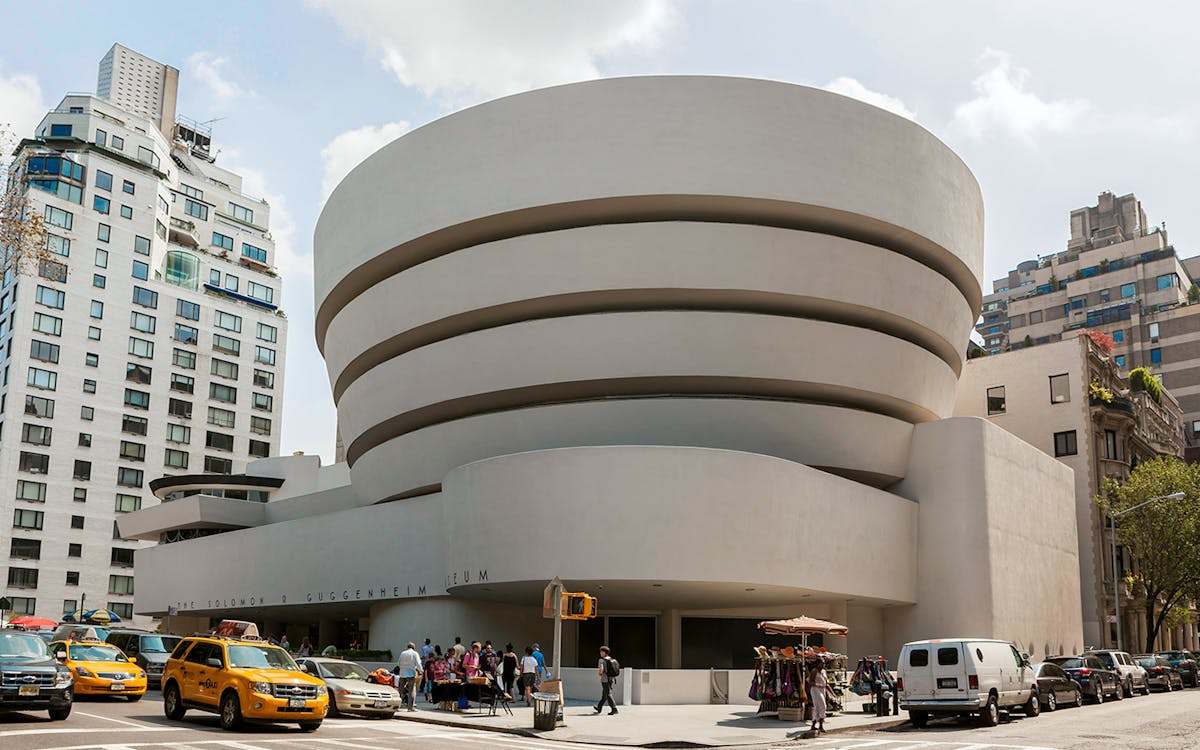
Guggenheim Museum – In a nutshell
Handy information
| ⏰ Suggested Duration: | 3-4 hours |
| ☀️ Best Time to Visit: | Morning Hours |
| 💜 Must Do: | Explore the Thannhauser Collection |
| 🎟️ Guggenheim Museum Ticket: | $30 |
| 🚇 Closest Metro: | 86 Street Station |
Artworks to see
Thannhauser Collection
Works of Wassily Kandinsky
Post-Impressionist masterpieces
Things to know
Offical name: Solomon R. Guggenheim Museum
Date of opening: 21 October 1959
Architect: Frank Lloyd Wright
Architectural style: Modern, organic
Function: Art museum
Opening hours and address
- 11 AM to 6 PM on Sundays to Fridays
- The last admission is at 5:30 PM
- Address: 1071 Fifth Avenue, New York, NY 10128, USA
Get Directions
Why you must visit the Guggenheim Museum?
- The futuristic architecture: Step into a world where art meets architecture. Designed by the renowned architect, Frank Lloyd Wright, the museum’s unique spiral ramp and domed skylight are a sight to behold.
- A walk through NYC’s history: Immerse yourself in the rich history of modern and avant-garde art. The museum, founded in 1939, is a tribute to Solomon R. Guggenheim’s passion for art and is the first of five Guggenheim Museums worldwide.
- Artistic treasure trove: Discover a treasure trove of early modernist works in the museum’s extensive collection. From impressionist paintings to contemporary installations, there’s something to captivate every art enthusiast.
- A unique journey: Engage with art like never before as you descend the museum’s circular ramp. It’s not just about viewing art, it’s about experiencing the journey of discovery that the unique layout offers.
- Engaging art programs: Unleash your creativity with the museum’s diverse art programs. Whether you’re a student, a teen, or just looking to try out your strokes, these programs are a great way to engage with art and challenge your creativity. Don’t just visit a museum, become a part of the art world!
Recommended Guggenheim Museum tickets
Guggenheim Museum – Your experience deconstructed
1Start at the Top
Begin your journey by taking the elevator to the 6th floor. Begin your descent along the spiral ramp. This will take you through a series of exhibitions featuring art from various periods and styles. The ramp offers a unique perspective on each piece as you approach it from different angles.
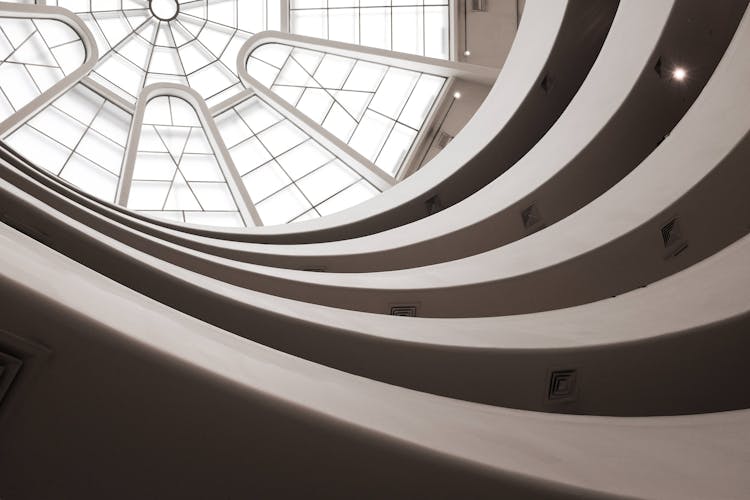
2The Tower Galleries
As you continue your descent, you’ll reach the Tower Galleries. These four galleries are home to temporary exhibitions and offer stunning views of Central Park. Currently, there are two temporary collections that you must catch - “Going Dark: The Contemporary Figure at the Edge of Visibility” which features partially obscured or hidden figures, positioning them at the “edge of visibility” and “Only the Young: Experimental Art in Korea”, which reflect and the changing socioeconomic conditions following the Korean War of the 1950s.

3The High Gallery
Further down, you’ll come across the High Gallery, a tall, windowless cylinder located off the ramp, which is a unique feature of the Guggenheim Museum. This space is separate from the main spiral and is known for hosting single-artist installations, allowing you to immerse yourself in the work of one artist at a time. The gallery’s design, with its high ceilings and focused lighting, creates a dramatic setting that enhances the impact of the artworks on display.

4Interactive Displays
The Guggenheim often features interactive displays that allow you to engage with the art in a hands-on way. These displays give a deeper understanding of the artist’s intent and the historical context of the work.

5Other Permanent Collections
The Guggenheim’s permanent collection is based on nine private collections, including Solomon R. Guggenheim’s collection of non-objective paintings, Karl Nierendorf’s collection of German expressionism and early abstract expressionism, and Peggy Guggenheim’s collection, concentrating on abstraction and surrealism.

6Special Events
The Guggenheim hosts a variety of special events throughout the year, including lectures, workshops, and performances. Attending these events can provide additional insight into the artworks and offer the opportunity to learn from experts in the field.

7Reflection
After your visit, take some time to reflect on your experience in the museum’s café or bookstore. The Guggenheim is not just a place to see art, but also a space for contemplation and inspiration.

History of the Guggenheim Museum
The Guggenheim Museum’s story is as fascinating as the art it houses. It all started with the Solomon R. Guggenheim Foundation, which was established in 1937. The foundation’s first venue in New York, the Museum of Non-Objective Painting, opened in 1939, showcasing Solomon Guggenheim’s diverse art collection. Here are some key moments in its history.
- The journey began in 1937, when the Solomon R. Guggenheim Foundation was established.
- The Museum of Non-Objective Painting was designed by William Muschenheim and opened in 1939.
- As the collection expanded, the need for a permanent building became apparent. In 1943, Frank Lloyd Wright was commissioned to design a museum in New York City.
- After 16 years of planning and construction, the Solomon R. Guggenheim Museum opened on October 21, 1959.
Architecture of the Guggenheim Museum
The Guggenheim Museum’s architecture stands out from the conventional design of high-rise buildings of New York. 700 iterations later, Frank Lloyd Wright’s vision of an inverted spiral pyramid came to light to showcase the museum's interactive collections. Here are some architectural highlights.
- The museum’s exterior is a stacked white cylinder of reinforced concrete that spirals upwards.
- Inside, a massive atrium soars 92 feet in height, culminating in a vast glass dome.
- A continuous ramp flanks the sides of this skylight lit museum, uncoiling upwards for six stories.
- This innovative design allows visitors to move seamlessly from one floor to another while being able to see the exhibits from up close.
Artworks you must see at the Guggenheim Museum
Best time to visit the Guggenheim Museum
If you want to try and explore every artwork museum’s collection, be sure to arrive at the museum early, ideally before noon. This way, you can avoid the crowds and enjoy the exhibits at your own pace. Avoid visiting on Mondays which is the busiest day of the week. Since most other museums in New York are closed, the Guggenheim tends to be packed. If you happen to be visiting on a Saturday, wrap up your visit by 5 PM, as a ‘Pay What You Wish’ policy kicks in to attract more visitors. While the museum is a delight to visit in all seasons, try to avoid holiday periods like Christmas, when the crowds tend to be large.
Guggenheim Museum – Opening hours
11 AM to 6 PM on Sundays to Fridays. The last admission is at 5:30 PM. 11 AM to 8 PM on Saturdays. A discounted ‘Pay What You Wish’ ticket policy kicks in at 5 PM on Saturdays drawing a larger number of visitors.
Getting there
- You can take the following bus routes that pass near Prudential Tower: 1, 39, 504, 9, BB.
- From various locations, you can take a bus to Prudential Tower. For example, from Kelly’s Roast Beef, Revere it takes about 102 minutes.
- The Green Line “E” train has a Prudential Center stop which exits into the Center.
- You can take the following subway lines that pass near Prudential Tower: GREEN LINE D, GREEN LINE E, ORANGE LINE.
- The complex is conveniently accessible from I-90 and I-93 and is located within two blocks of Back Bay Station with commuter rail, Amtrak, and MBTA subway access.
Insider tips for visiting the Guggenheim Museum
- Plan your visit: Guggenheim Museum can get busy, especially during peak tourist season. Plan your visit ahead of time to avoid long lines and ensure you get the most out of your experience.
- Explore the exhibits: Don’t miss out on the key attractions like the Thannhauser Collection and the special exhibitions. These will make your visit more fulfilling.
- Attend special events: Keep an eye on the special events like live lectures and create your own masterpiece sessions that take place at Guggenheim Museum. These can add a special touch to your visit.
- Dress appropriately: The museum can be chilly, especially in the evenings or during cooler months. Dress in layers or bring a jacket to stay comfortable.
- Make a pit stop: Be sure to stop at Cafe 3 or The Wright to grab quick bites or mouth-watering platters before you continue your journey down the spiral floors.
- Dress appropriately: The open-air roof deck can be chilly, especially in the evenings or during cooler months. Dress in layers or bring a jacket to stay comfortable.
- Capture the moment: Don’t forget your camera! There would be plenty of moments that you would want to capture at the museum.
- Learn about New York’s history: Use this opportunity to learn more about New York’s history, culture, and architecture through the exhibits and information available at the Guggenheim Museum.
- Relax and take your time: Lastly, don’t rush your visit. Take your time to explore all the collections, and make lasting memories.
Interesting facts about the Guggenheim Museum
- Movie and Pop Culture References: The Guggenheim Museum has been featured in several well-known films. For instance, in the 2009 film ‘The International’, a gunfight between Louis Salinger (played by Clive Owen) and assassins is made even more thrilling by the art museum’s concentric architecture. In addition, in the 2023 animated film ‘Spider-Man: Across The Spider-Verse’, Gwen’s Spider-Woman fights a Leonardo Da Vinci-themed version of the Vulture inside the Guggenheim Museum.
- A architectural benchmark: The Guggenheim Museum’s design was so groundbreaking that it sparked a sensation among top architects of the time. For instance, architects such as Zaha Hadid, Daniel Libeskind, and Frank Gehry have created dynamic, fluid spaces that challenge the standard notions of form and function inspired by the Guggenheim Museum's design.
- Colorful History: Frank Lloyd Wright, the architect of the Guggenheim Museum, originally wanted the museum’s exterior to be red, his signature color. However, this idea was shot down, and the original exterior ended up being painted a brownish yellow. During a $29 million restoration, conservators removed 11 layers of paint, unearthing the original hue.
- A Long Ramp: The museum is known for its unique spiral ramp, which is more than a quarter-mile long. Visitors who have walked up this ramp know it’s a bit of a workout. The entire ramp is 1,416 feet long and it’s set at an inclination of 18 degrees.
- Robert De Niro Sr.'s Connection: Robert De Niro Sr., an American abstract expressionist painter and the father of actor Robert De Niro, worked as a guard at the Museum of Non-Objective Art, which would later become the Guggenheim Museum. He was financially supported by the museum’s director, Hilla Von Rebay. In 1945, he was included in a group show at Peggy Guggenheim’s Art of This Century in New York.
Dining at the Guggenheim Museum

Cafe 3, located on the third floor of the Guggenheim Museum is your perfect pitstop on your tour of the Guggenheim. It has a casual dining experience that’s perfect for a quick bite or a leisurely meal. The menu features a variety of options, including pastries, sandwiches, salads, and a selection of beverages. But the highlight of Cafe 3 is undoubtedly the stunning view of Central Park. As you enjoy your meal, you can gaze out at the lush greenery and bustling activity of one of New York City’s most iconic landmarks.
Things to do around Guggenheim Museum
Hotels Around Guggenheim Museuem
Luxury stays
Economical Stays
Budget Stays
Frequently asked questions about Guggenheim Museum
The Guggenheim Museum offers a vast collection of modern and contemporary art. You can also explore the Thannhauser Collection, which includes works by artists such as Picasso, Van Gogh, and Monet.
Inside the Guggenheim Museum, you’ll find a collection of modern and contemporary art, a unique spiral ramp gallery, and two dining options.
Yes, the Guggenheim Museum is accessible to guests with reduced mobility.
We suggest spending about three to four hours to make the most of your visit to the Guggenheim Museum.
The Guggenheim Museum maintains a strict no-animals policy, even during non-public hours. However, Certified Service Animals and animals undergoing training for certification, are allowed to assist guests.
You are free to capture personal photos and videos using hand-held devices to document your experience. However, professional recording equipment is not permitted without prior approval from the Guggenheim Museum management.


